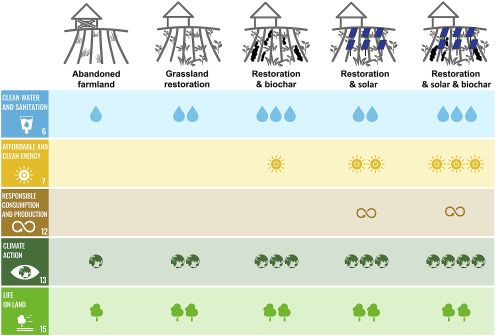Yang, Yi*; Hobbie, Sarah E.; Hernandez, Rebecca R.; Fargione, Joseph; Grodsky, Steven M.; Tilman, David; Zhu, Yong-Guan; Luo, Yu; Smith, Timothy M.; Jungers, Jacob M.; Yang, Ming; Chen, Wei-Qiang*
One Earth 2020 3 (2), 176-186. DOI: 10.1016/j.oneear.2020.07.019
Abstract
Degraded farmlands have been abandoned worldwide, especially in high- and middle-income countries. These lands help combat climate change as they undergo natural recovery of vegetation and soil carbon and remove carbon dioxide from the atmosphere. However, recovery can be slow, requiring decades to centuries to approach pre-cultivation or natural states, and in some cases, soils remain degraded without active restoration. In this perspective, we present an overview of how carbon capture and storage on abandoned farmland can be accelerated and maximized via managing plant diversity as both a means and an end of restoration, creating and applying biochar to soil, and co-developing with renewable energy as techno-ecological synergies. These strategies can jointly tackle climate change and land degradation while contributing to and reinforcing multiple other Sustainable Development Goals. Although challenges exist, adoption of these strategies could be facilitated by increasing governmental and corporate initiatives at global and regional levels, especially developing carbon-offset markets for agriculture.
An Illustration of How Different Strategies Contribute to the UN SDGs.
